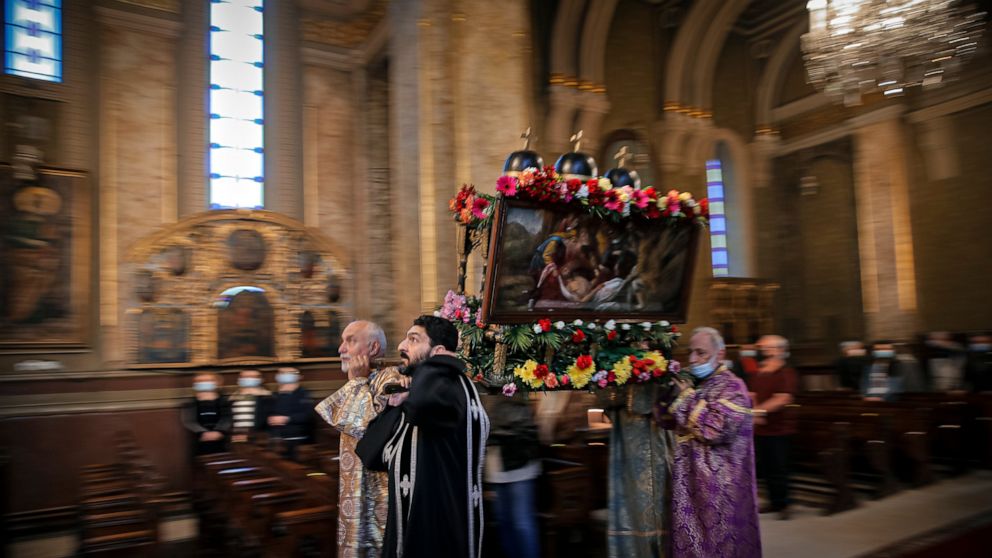
The ethnic Armenian population in Romania numbered more than 40,000 at the beginning of World War II but rapidly plunged during the country's communist era, especially during the dictatorship of Nicolae Ceausescu.
The latest available census data shows a little over 1,300 people in Romania today identify as Armenian, many of whom welcomed the resumption of Orthodox slotxo Easter church services that were canceled last year due to the coronavirus pandemic.
More than 100 people wearing mandatory face masks gathered inside and outside Bucharest's Armenian Church, an imposing white building fashioned after the main Armenian Apostolic Church cathedral. Archbishop Datev Hagopian, the Iraq-born clergyman who since 2010 has served as primate of the Armenian church's Romanian Diocese, led the Easter service.
Armenians, mostly traders, were an important presence starting in the 14th century in the region that makes up modern Romania, and the oldest historical evidence of their presence there dates from 967 AD. In 1700, they established Armenopolis, a city in the Transylvania principality that was then a part of Habsburg-ruled Hungary. The city is now called Gherla, while Transylvania is a region of central Romania.
After the systematic killings of up to 1.5 million Armenians in the early 20th century Ottoman Empire, modern Turkey - which US President Joe Biden last month recognized as a genocide - many Armenians took refuge in Romania, where an orphanage was set up for up to 200 children who lost their parents.
Although Armenians celebrate Christmas on Jan. 6, according to the Julian calendar, Armenian Apostolic Church leaders decided after the mass killings, in 1925, to observe Easter at the same time as the Orthodox Christian majorities in Romania and Greece. They believed the change would promote the integration of Armenians in the countries that accepted refugees and eliminate possible doubts about their Christianity.

